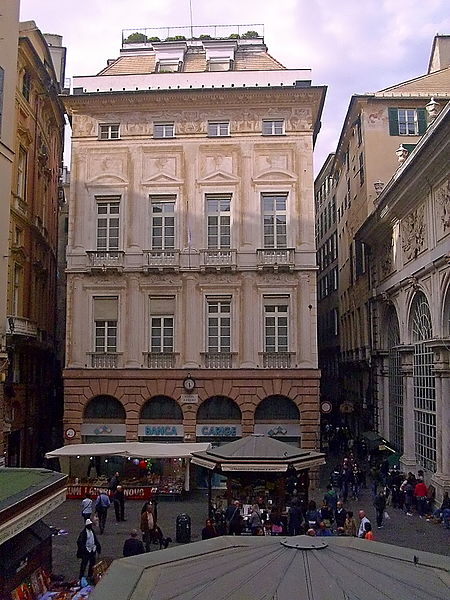Palazzo Ambrogio Di Negro
16th-century architecture in ItalyPalaces in GenoaWorld Heritage Sites in Italy

The Palazzo Ambrogio Di Negro is a building located in Via San Luca at number 2 in the area of the Mercato di Banchi in the historic centre of Genoa, included on 13 July 2006 in the list of the 42 palaces enrolled in the Rolli di Genova that became World Heritage by UNESCO on that date. It preserves an important Mannerist painting cycle inside. In front of the palace is the Loggia dei Mercanti (Genoa) and the Church of San Pietro in Banchi.
Excerpt from the Wikipedia article Palazzo Ambrogio Di Negro (License: CC BY-SA 3.0, Authors, Images).Palazzo Ambrogio Di Negro
Vico Denegri, Genoa Centro Est
Geographical coordinates (GPS) Address External links Nearby Places Show on map
Geographical coordinates (GPS)
| Latitude | Longitude |
|---|---|
| N 44.40946 ° | E 8.92984 ° |
Address
Palazzo Ambrogio De Nigro
Vico Denegri
16123 Genoa, Centro Est
Liguria, Italy
Open on Google Maps











